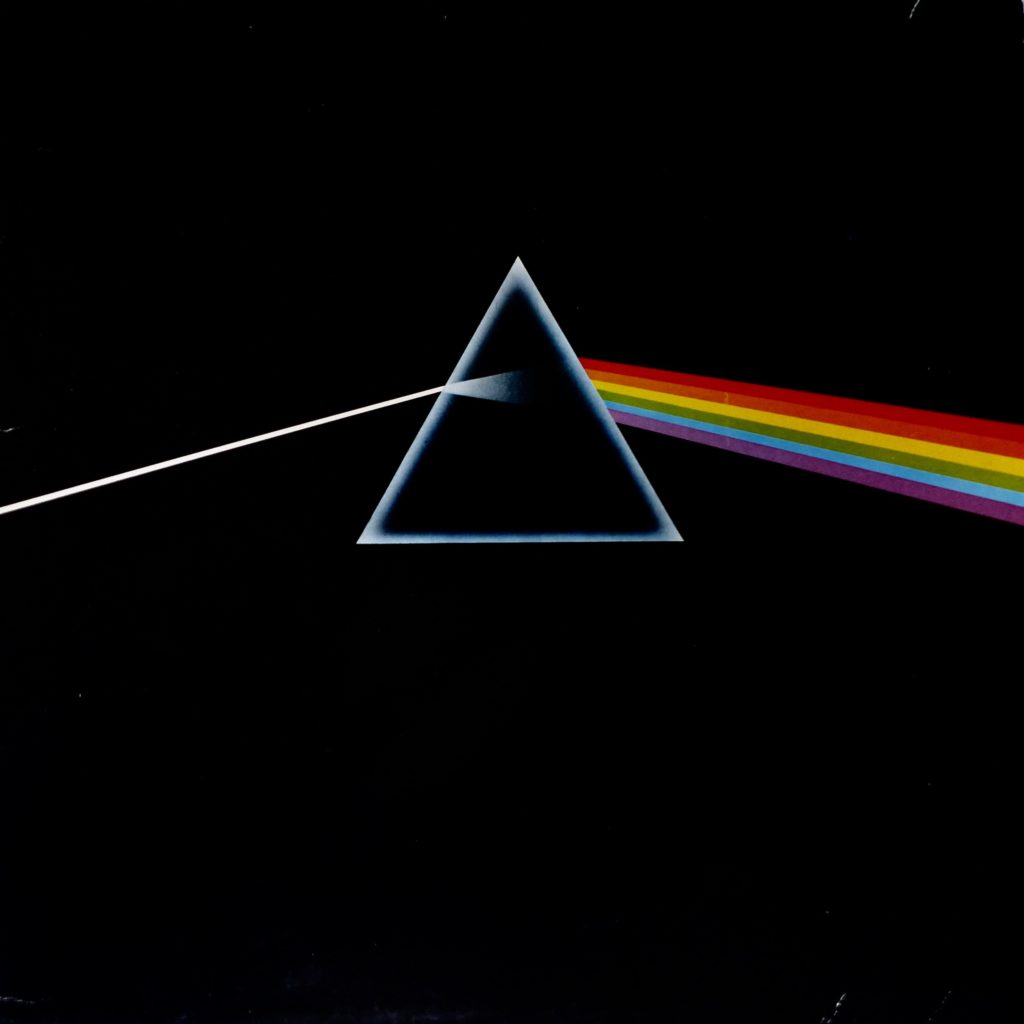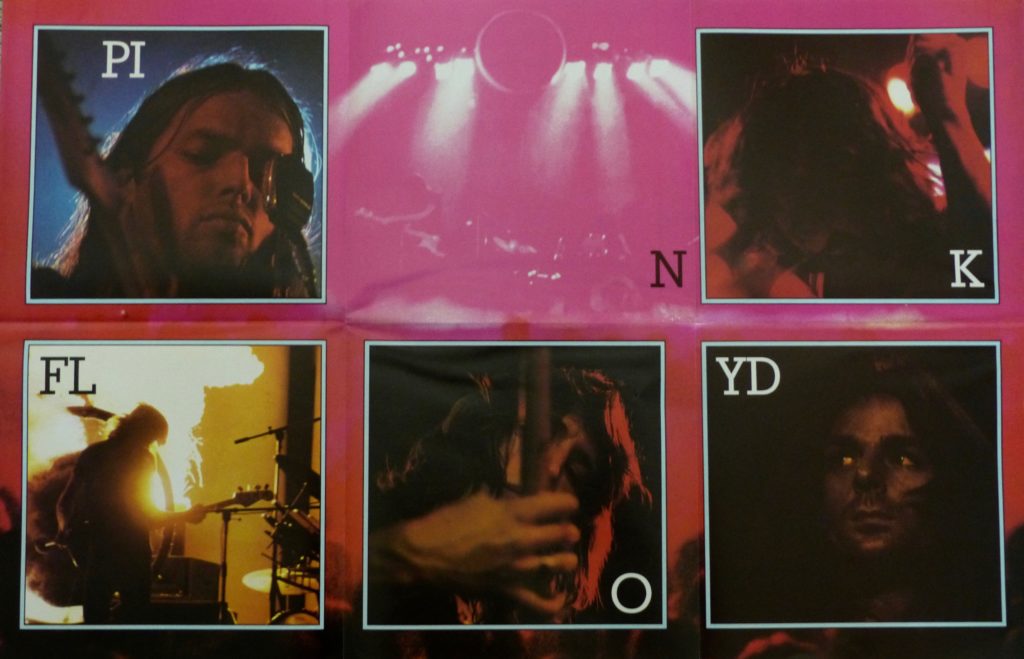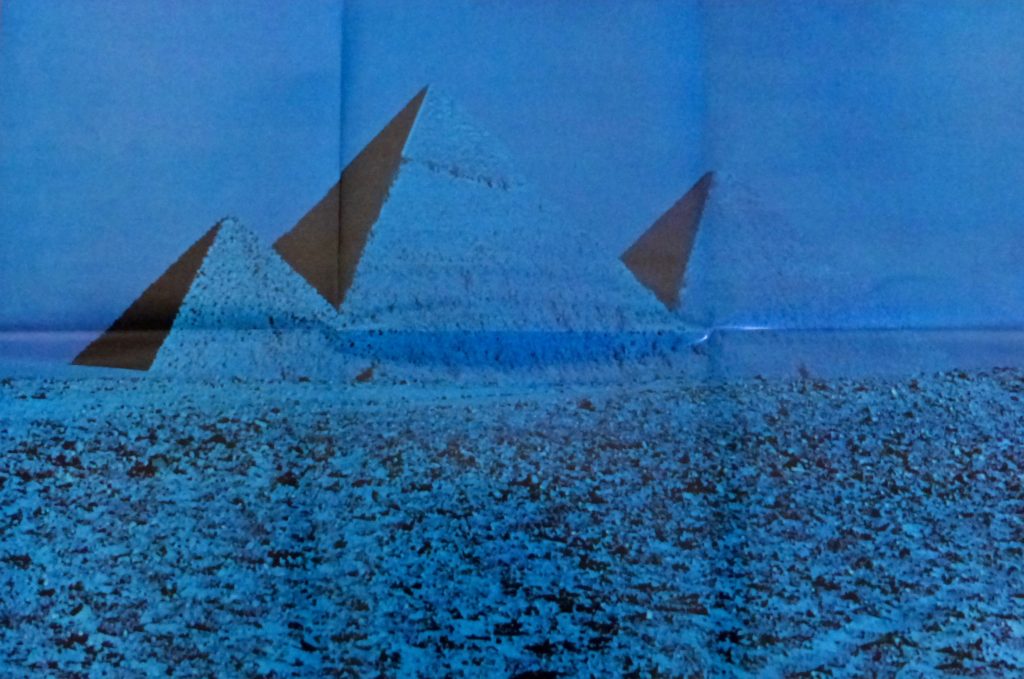 Let’s be honest. You can’t have a classic album series without including this record. It’s impossible. The Dark Side Of The Moon is a record vast in its thematic, musical and lyrical scope and one that is brilliantly engineered. It’s become so ubiquitous that for many who aren’t rock music fans if there is one rock record in their collection chances are it’s this one.
Let’s be honest. You can’t have a classic album series without including this record. It’s impossible. The Dark Side Of The Moon is a record vast in its thematic, musical and lyrical scope and one that is brilliantly engineered. It’s become so ubiquitous that for many who aren’t rock music fans if there is one rock record in their collection chances are it’s this one.
Thematically The Dark Side Of The Moon was about alienation (hardly a new concept in rock music), madness, conformity, war mongering (one of Roger Waters’ obsessions), the pressures of society, consumerism and the passing of time. To me it has always sounded like a very English record. Of course there’s the obvious lyrical references like “Hanging on in quiet desperation is the English way” or the imagery of coming home cold and tired, warming your bones by the fire as an iron bell tolls across the field. But it’s the ticking of the clocks, the industrial sounds and those very English mutterings like “I’ve always been mad, I know I’ve been mad” that make this as British as a cup of tea and a cucumber sandwich.
Part of the magic of this album is that we all connect with it in very different ways. Whether you’re altering your chemical balance for a head trip; syncing it to the soundtrack to The Wizard Of Oz (yes, I’ve experimented with that too and it works, up to point); or just an audiophile getting lost in the soundscape of this masterpiece it doesn’t matter – it’s a majestic listening experience all the way.

The first time I heard The Dark Side Of The Moon was just after it was released in 1973 when a mate invited me round to his place after school one afternoon. He said that his big brother had just bought these 2 amazing albums he’d been raving about so we should sneak into his room to check them out. As a curious 9 year old open to a world of opportunity I was hardly going to say no. The first record we put on the turntable was Led Zep’s Houses of the Holy – with those naked nymph like creatures on the cover it had to be first! We then followed it with Floyd. I thought Zep was mind blowing, but Floyd? Man that sounded like nothing I’d ever heard before – it was from another planet!
Like every album it starts with the cover and with no name on the record’s sleeve I had no idea who or what this was. Opening the gatefold doesn’t name the band either, although it does say the album was produced by Pink Floyd, whoever he, she or they were. It’s not until you remove the disc from the sleeve that you realise that the album’s producer and performer are one and the same. While it was the third Floyd album not to have any identification you can imagine the executives at EMI having conniptions over the band’s insistence that there was to be no wording on the cover: “this is a marketing nightmare – it will be a disaster!” 45 million + album sales later The Dark Side Of The Moon has shattered sales and chart records globally, making it one of the most universally recognised and iconic album covers in music history.
The album opens with the sound of a thumping heartbeat, a pulse that drives this seamless album of very human emotions. Speak To Me/Breathe inauspiciously invites us to “breathe in the air, don’t be afraid to care” as if this most simplest of human responses requires some effort to awaken us from our passive state of numbness. As On The Run takes over the heartbeat has become an ever quickening pulse, with random voices thrown at us in a psychedelic swirl that places us in an airport with electronic sounds moving in and out of phase from one channel to the next. As the pace quickens we hear “live for today, gone tomorrow” – a reference to both Roger Waters’ fear of flying at that time and his realisation at the age of 29 that life was no dress rehearsal, every opportunity had to be taken and appreciated. He felt the time was right for the band to make a great record and this was going to be it. It’s also when we first get a real sense of madness as a theme on the album as the song reaches its climax with a maniacal laugh and an explosion.
That explosion segueways into a series of ticking clocks, broken by the loud ringing of an alarm and a host of clanging chimes, all recorded by engineer Alan Parsons in an antique clock shop. Time continues to carry the pulse of the record though in this instance it’s like a sped up metronome. Dave Gilmour strikes a few ominous guitar chords as Richard Wright plays a simple organ motif underneath, but it’s Nick Mason’s distinctively spatial drum pattern that really sets the song’s rhythm and finally allows the song to kick in fully with Gilmour’s vocal after a two and half minute intro. The song concerns the passing of time, and more specifically our capacity to waste it “waiting for someone or something to show you the way”. At around the three and a half minute mark the song finds a new gear as Gilmour launches into one of rock’s more memorable guitar solos – a very deliberate slow blues and the moment when Gilmour created what would become one of Floyd’s most defining sounds.
Time moves into a brief reprise of Breathe before it all melts away into the album’s epic showstopper. The Great Gig In The Sky is an incredibly rich, powerful and moving piece led by Richard Wright’s gorgeous piano melody. Gilmour chimes in with some underplayed slide guitar and as we hear another voice telling us “I’m not frightened of dying, any time will do, I don’t mind…” it all seems a little innocuous until Clare Torry opens her vocal chords. There is so much power in that wordless vocal – it is pure emotion. Clare was invited to the session to provide an interpretation to Wright’s melody and was reportedly embarrassed by what she delivered (according to Waters, Clare was paid “60 quid” for the session). The band was blown away by Clare’s performance and as her vocal interpretation was so integral to the song she later successfully sued Pink Floyd for a co-writing credit. Richard Wright has said The Great Gig In The Sky was about death (the in-joke of the song’s title was a reference to Floyd’s touring schedule – so relentless that it was going to kill them), but surely it has to be one of the most sensual and erotic pieces committed to vinyl. As a 9 year old hearing the song for the first time it was an experience beyond words, but if listening to Clare’s orgasmic vocal constitutes a sexual experience it was definitely my first!
Side two jumps out of the blocks (and your speakers) with Money, its introduction comprised of a cacophony of cash registers, coins and adding machines. The separation of the sound effects between the two channels is enough to put your head in a spin from side to side until Roger Waters’ fat bass line fills the centre of the listening spectrum. It’s a fantastically engineered piece of production and one of the most formidable opening tracks to a second album side ever recorded. With it’s anti capitalist theme, wailing saxophone and yet another spectacular Gilmour guitar solo Money soon became a staple of FM rock radio playlists.
As Money fades out the song is stripped back to Nick Mason’s beat and once more the random voices enter the frame with some “geezer cruisin’ for a bruising” and “I don’t know, I was very drunk at the time” as Richard Wright’s organ begins to swirl underneath with a stunning saxophone setting the tone for the sad and poignant Us And Them. With Dark Side Of The Moon Roger Waters had matured as a lyricist. It was the first time his lyrics had been printed on a Floyd album (it only took 8 albums!) and Waters feels that more than any other song on the album Us And Them with its human sacrifice as the cost of war message is still the most relevant today.
The instrumental Any Colour You Like is a shot at consumerism and the perception of choice. It becomes the transitional piece that leads to the album’s endgame of Brain Damage and Eclipse. It’s well documented that former Floyd member Syd Barrett’s mental health was the basis of the madness theme on the album. The lyric “And if the band you’re in starts playing different tunes” was a reference to Barrett’s breakdown that would sometimes see him playing a different song to the rest of the band in concert. A gospel like chorus tails out with Brain Damage as it morphs into the album’s epilogue Eclipse and with it the return of more random voices and laughter to continue the theme of insanity. Backed by Wright playing church organ and the continuation of the gospel chorus the song’s message of all that you do under the sun is eclipsed by the moon is very quickly undermined of any pretense as it tails out with the album’s final spoken voice: “there is no dark side of the moon really. Matter of fact it’s all dark”. As The Dark Side Of The Moon ends as it began with a heartbeat it’s a reminder that there is always a little humour amongst the madness.
Listening back to this classic album on vinyl for the first time in a very long time with its seamless flow from one track to the next and the defining end point on side one with the wow in the tape at the end of The Great Gig In The Sky, followed by the sudden kick start of side two with Money recalls a time when records were not just a collection of songs, but a sonic journey devised specifically for two album sides. Dark Side Of The Moon remains one of the most brilliant examples of that kind of listening experience. Ironically with the passing of time as one of its major themes it’s an album that has become timeless in itself, and that’s the benchmark of any great record.

So moving, so truly beautiful. Thanks Trev for your insight and sharing. LOVE the music, A lot of good and Special stuff here. Like listening and reading, and getting it. Have to tell ya’ (on the last one) Beth has a fine voice, but can’t listen to the blues anymore, victim sad stuff, need positive and uplifting. Love you. Marty
Thanks Marty. I hear you. Stay positive. x